Prepare to be amazed by the colossal giants lurking beneath the Pacific waves! Among these titans, one name reigns supreme: Deep Blue. This magnificent female great white shark measures an astounding 20 feet in length and tips the scales at over 2.5 tons.
First documented near Guadalupe Island, Mexico, Deep Blue has since been spotted off the coast of Hawaii, captivating marine biologists and ocean enthusiasts alike.
Her immense size and distinctive markings make her an unforgettable sight, embodying the raw power and mystery of the ocean’s depths.
Join us as we dive into 14 fascinating facts about Deep Blue, the largest great white shark ever recorded in the Pacific.
Size and Magnitude
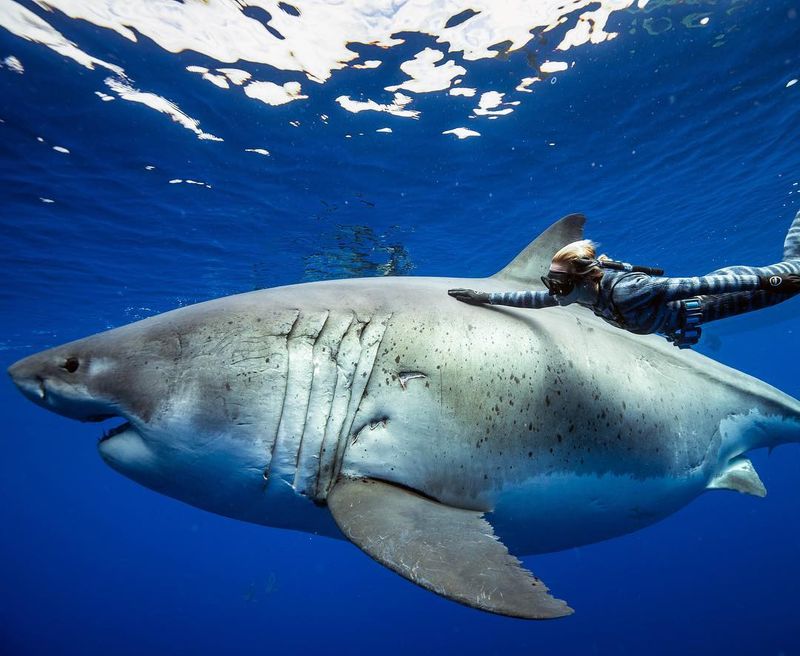
Imagine a creature so enormous, it dwarfs the average size of its species. This particular great white shark stretches an astonishing 20 feet in length, making it one of the largest ever recorded. Such size not only demands respect but also piques the curiosity of scientists globally.
Marine biologists are eager to understand how it reached such dimensions. Was it a matter of genetics, or did its environment play a significant role? Every encounter with this giant reveals more about the mysteries of ocean life.
Its girth is equally impressive, adding to its formidable presence as it glides effortlessly through the water.
Distinctive Features
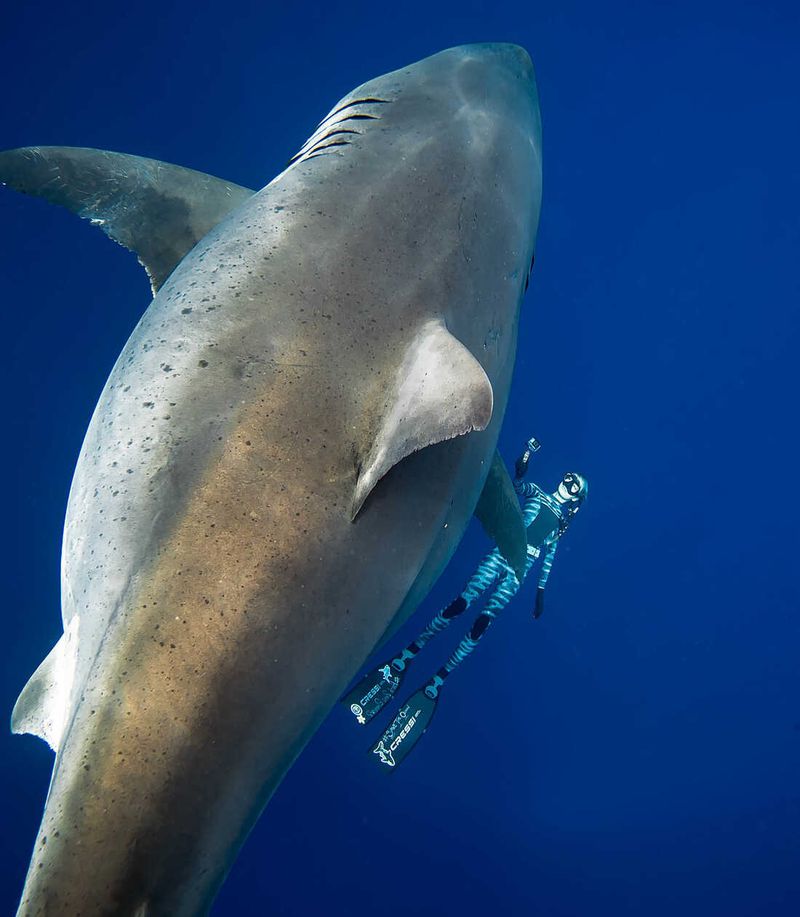
The great white shark is not just known for its size but also its distinctive features. Scars from past battles mark its body, each telling a story of survival and dominance in the wild.
Its dorsal fin, a towering presence above the waves, acts as a natural sail, cutting through the water with grace and power. These features distinguish it from its peers, making it an iconic figure in the marine world.
Observers note the shark’s striking eyes, which convey intelligence and curiosity, traits not often associated with apex predators.
Diet and Hunting Techniques

A master hunter, this great white shark employs a variety of techniques to secure its prey. With keen senses, it detects the slightest movements in the water, honing in on seals, fish, and sometimes even other sharks.
Its speed is deceptive; in a sudden burst, it can reach velocities that leave prey with little chance of escape. The shark’s hunting strategy involves stealth and surprise, often breaching the water in a spectacular display of power.
These hunting methods highlight its role as a top predator, crucial for maintaining the balance of marine ecosystems.
Mysterious Migrations
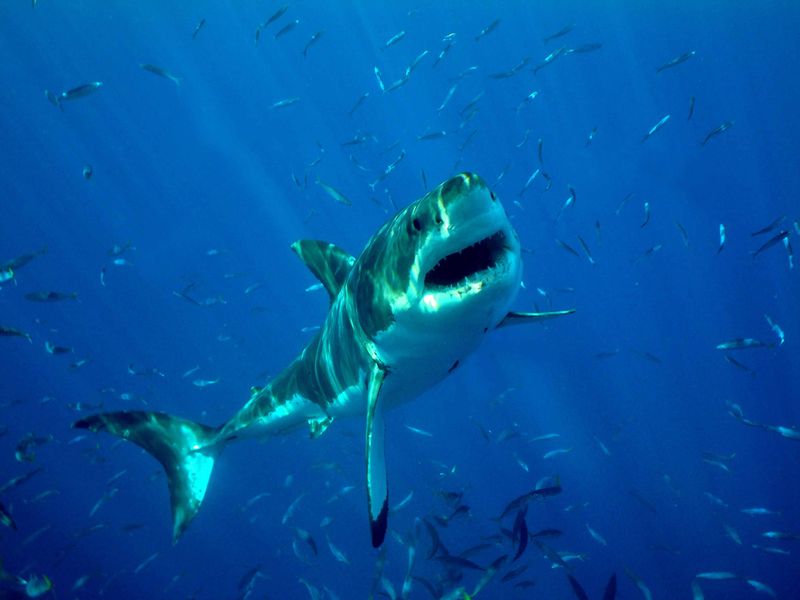
Where does this magnificent creature travel? The migrations of great white sharks like this one remain a mystery, intriguing researchers who track their long journeys across oceans.
Some believe their movements are linked to breeding or feeding grounds, while others suggest environmental changes as potential triggers. The Pacific Ocean offers vast expanses for exploration, yet the exact reasons behind their travels are elusive.
Each migration provides valuable data, shedding light on shark behavior and the health of marine environments.
Conservation Efforts
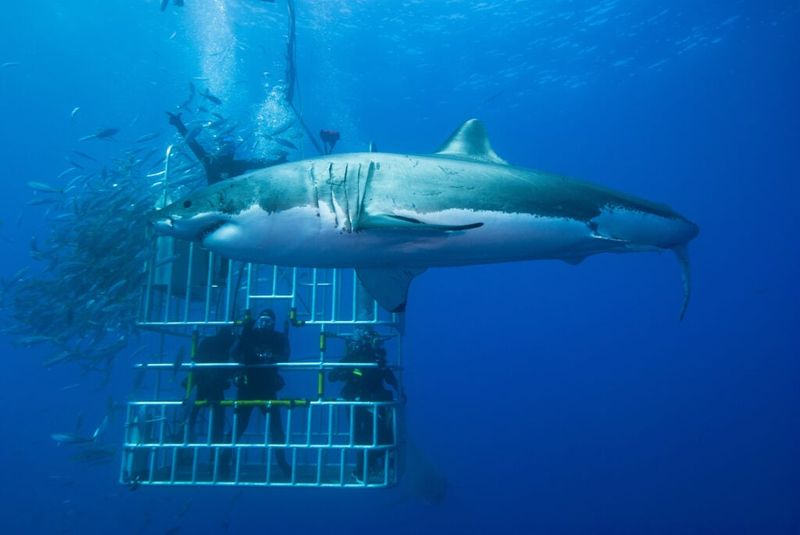
Conservationists are keenly interested in protecting creatures like the great white shark, which faces numerous threats from human activity and climate change.
Tagging and tracking these sharks help scientists gather data essential for conservation efforts. By understanding their habits, researchers can advocate for protective measures, ensuring the species’ survival.
Public campaigns raise awareness about the importance of sharks in ocean ecosystems, highlighting their roles as apex predators. These efforts are crucial for maintaining the delicate balance of marine life in the Pacific and beyond.
Famous Encounters
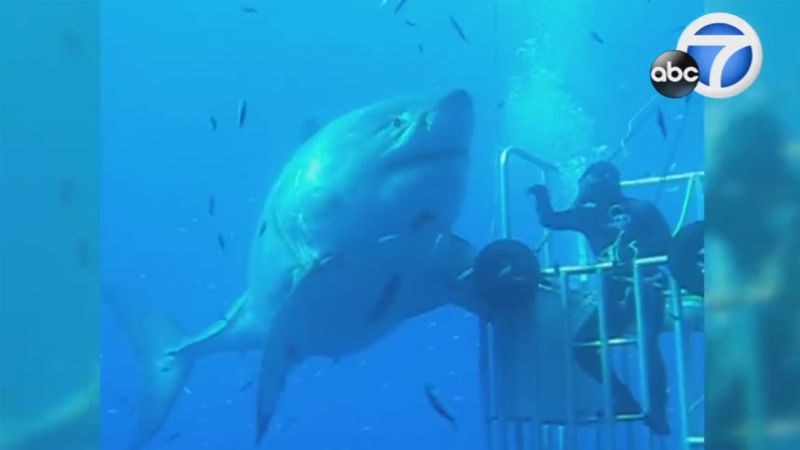
This great white shark has had its share of fame, with numerous divers and photographers eager to capture its grandeur on film. Each encounter adds to its legendary status, drawing attention from around the world.
Divers describe the adrenaline rush of being in the presence of such a large predator, yet many also speak of a surprising calmness. This juxtaposition adds to the shark’s allure, a blend of thrill and tranquility.
Photos and footage from these meetings continue to inspire awe, educating the public about these majestic creatures.
Historical Significance

Great white sharks have held a place in history and mythology for centuries. This particular shark connects the dots between ancient lore and modern science, offering clues about its ancestors.
Historical records and fossils suggest that these sharks have roamed the oceans for millions of years, adapting and evolving with the planet’s changes. Their continued existence is a testament to their resilience and adaptability.
Understanding this shark’s history enriches our knowledge of the natural world, bridging the gap between past and present.
Technological Advancements

Modern technology plays a pivotal role in studying the great white shark. Advanced sonar and satellite tracking systems allow researchers to monitor its movements with unprecedented accuracy.
These tools provide insights into the shark’s behavior, migration patterns, and even social interactions. The data collected helps scientists make informed decisions about conservation strategies, ensuring that these majestic creatures thrive for generations to come.
Technology bridges the gap between human curiosity and the ocean’s mysteries, unveiling the life of one of its most iconic inhabitants.
Role in Popular Culture

The great white shark isn’t just a marine marvel; it’s a cultural icon. From movies like “Jaws” to countless documentaries, its image has captivated audiences, sparking both fear and fascination.
This particular shark adds a new chapter to the narrative, embodying the mysterious allure of the ocean’s top predator. Its massive size and enigmatic nature fuel the imagination, inspiring stories and myths.
While often portrayed as a fearsome creature, it’s essential to balance this image with its ecological importance, promoting a more nuanced understanding of its role in the ocean.
Scientific Discoveries
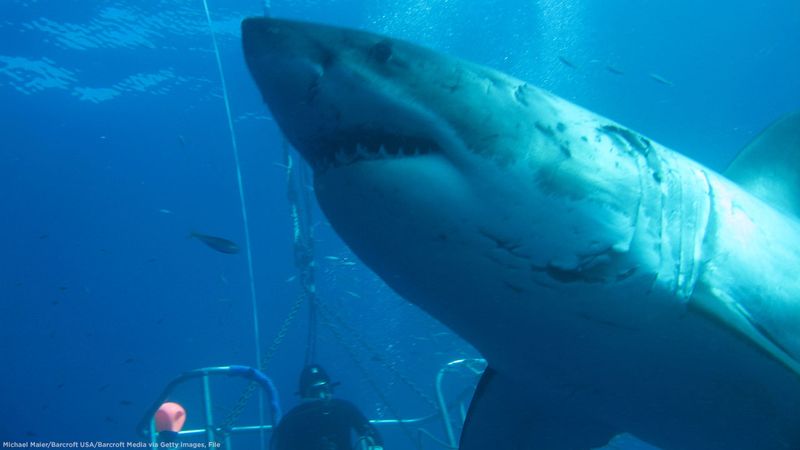
The largest great white shark ever observed offers a treasure trove of scientific discoveries. Its teeth, a subject of intense study, reveal much about its diet and hunting efficiency.
Researchers also examine its anatomy to understand its strength and agility, unlocking secrets hidden within its powerful muscles. These findings contribute to our broader understanding of shark physiology and evolution.
Each scientific breakthrough brings us closer to comprehending the complex life of these apex predators, emphasizing the importance of continued research and exploration.
Environmental Impact
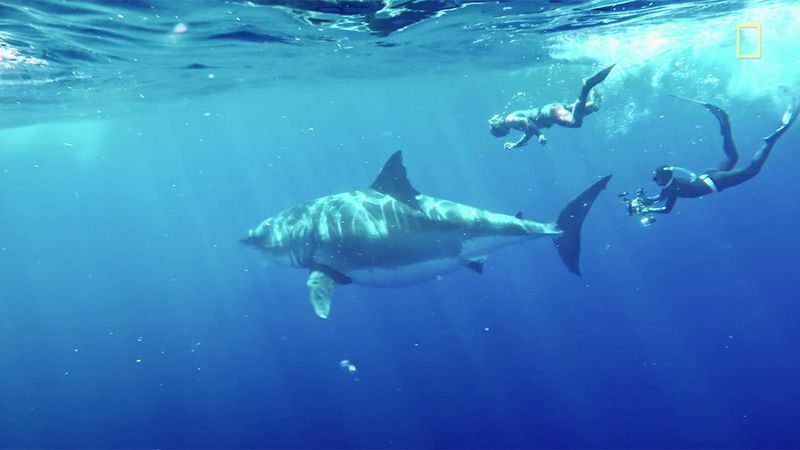
This giant shark influences the ecosystem in profound ways. As an apex predator, it regulates species populations, maintaining the balance necessary for a healthy marine environment.
Its presence deters overpopulation of certain species, allowing marine biodiversity to flourish. These interactions highlight the interconnectedness of ocean life, with each creature playing a crucial role.
Protecting such sharks is vital, not just for their survival but for the overall health of the ocean’s ecosystems, underscoring the importance of conservation efforts worldwide.
Myth vs. Reality

The great white shark is often shrouded in myths, portrayed as a mindless killer in many tales. However, reality paints a different picture, one of an intelligent and complex creature.
This largest specimen defies stereotypes, displaying behaviors that suggest curiosity and adaptability. Researchers are keen to dispel misconceptions, emphasizing the shark’s ecological role over its fearsome reputation.
By separating myth from reality, we gain a deeper appreciation for these magnificent creatures, fostering a more balanced view that encourages respect and understanding.
Collaboration Across Borders

Studying this colossal shark requires collaboration across borders. Scientists from various countries come together, pooling resources and expertise to unlock the secrets of its life.
Such partnerships enable comprehensive research, combining different perspectives and technologies. This global approach enriches our understanding, promoting a unified effort to protect these vital marine residents.
Collaboration fosters innovation, ensuring that we continue to learn and discover more about the ocean’s mysteries, with the great white shark being a focal point of international marine research.
Personal Stories

The stories of those who’ve encountered this giant shark are as captivating as the creature itself. Marine biologists often share their experiences, highlighting the awe and respect they hold for this apex predator.
One biologist described the thrill of observing the shark’s massive tail propelling it through the water, a testament to its strength and grace. These personal accounts add a human element to the scientific narrative, bridging the gap between research and public interest.
Such stories inspire new generations to explore and protect the ocean’s wonders, driven by the allure of its magnificent inhabitants.

